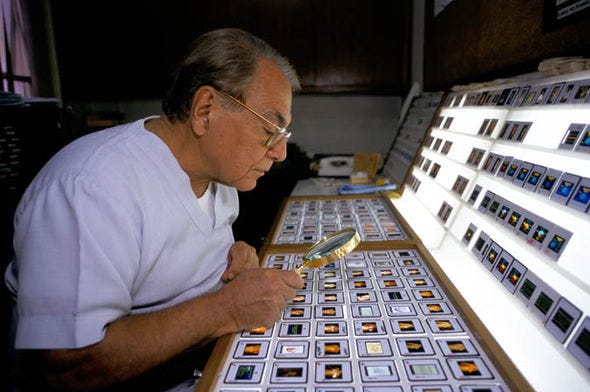“I believed aesthetic surgery should be available to everyone”
—Ivo Pitanguy

Born on July 5, 1926, in the city of Belo Horizonte, Brazil, Ivo Hélcio Jardim de Campos Pitanguy, was a plastic surgeon based in Rio de Janeiro.
If you aren’t subscribed yet, hit the subscribe button below to receive the Adorable Stories every weekend, directly in your inbox:
One of five children of a general surgeon, Antônio de Campos Pitanguy, and his wife, Maria, Ivo Pitanguy followed his father into medicine.
At 15, with his father’s help, Pitanguy lied about his age to get into medical school.
After training as a general surgeon in Rio, he was quick to see the potential of cosmetic surgery, which was then still in its infancy but developing fast as a result of groundbreaking treatments of scarred, burned and disfigured troops and civilians in the second world war.
Education and Career
Pitanguy studied at the Bethesda North Hospital, in Cincinnati, where he worked with John Longacre.
Soon after, Pitanguy advanced his studies specializing in plastic surgery in France and England: he studied in Paris with Marc Iselin, a leader in reconstructive bone surgery, and in London with Harold Gillies and Archibald McIndoe, who were experts on skin grafts for burn victims.
His return to Brazil in 1953 marked the start of his illustrious career, establishing him as a pioneering figure in aesthetic surgery.
On his return to Brazil he became the head of the burns unit at Souza Aguiar Hospital and head of reconstructive surgery at the House Of Mercy Hospital which is where he set up a free plastic surgery clinic aimed at helping the country’s most disadvantaged citizens.
Niteroi Fire
On December 17, 1961, a catastrophic fire at a circus in Nitéroi led to over 400 deaths and 2,500 people being injured, including many children disfigured with horrendous burns.
Pitanguy led a team of surgeons to treat the burnt victims for weeks non-stop, on an emergency basis: an experience that deeply affected him and shaped his career.
He later referred to the event as life changing, as it taught him that for many, physical appearance was critical to living.
Recognizing the need for a specialized center to treat burns and deformities, Pitanguy convinced hospital administrators to establish the first-ever plastic surgery department in a public hospital in 1960. This department not only treated patients but also became a hub for training future plastic surgeons.
In 1963, Pitanguy founded a private clinic called Clínica Ivo Pitanguy in the Botafogo neighbourhood of Rio de Janeiro, where he operated on clients and trained surgeons. The clinic quickly gained international reputation for its excellence in aesthetic surgery, drawing patients from around the globe.

Philosophy
Pitanguy’s surgical techniques and philosophies revolutionized the field of plastic surgery. He viewed plastic surgery not merely as an aesthetic process, but as a means to enhance a person’s self-esteem and quality of life. His approach was holistic, taking into account the psychological well-being of the patient as well as their physical appearance.
Pitanguy argued that cosmetic surgeons were “artists of the living form, dealing with body and soul,” though the effects of his work were often derided as superficial and reinforcing a stereotype of Brazil — and Rio de Janeiro in particular — as being unhealthily concerned about looks.
Pitanguy was also a philanthropist: he renovated a ward at the public Santa Casa da Misericórdia Hospital in Rio de Janeiro where, for four decades, he offered free treatment there.
Pitanguy lectured and taught extensively, helping to train over 580 plastic surgeons from 40 countries, and his techniques continue to be taught and practiced globally today.
Many of his alumni went on to found their own schools and clinics in an industry that mushroomed from the 1960s onwards.

Wealth
While he continued to work with the poorest of the poor, there is no denying Pitanguy was handsomely rewarded for enhancing the faces and bodies of Hollywood superstars.
His wealth allowed him to buy his own private island off the coast of Rio, collect masterpieces by the likes of Picasso and Matisse and set sail in luxury yachts.
He is also credited with helping Brazil become the world leader in cosmetic operations.
Notable clients
Throughout his career, Ivo Pitanguy treated a wide array of clients, ranging from those in desperate need of reconstructive surgery to the rich and famous seeking aesthetic enhancements.
His skill and discretion made him a go-to surgeon for celebrities, socialites, and even royalty: he always kept his list of famous patients a secret but it is now understood that Pitanguy treated countless well-known patients, such as Jackie Onassis, Elizabeth Taylor, Sophia Loren, and Gina Lollobrigida.
The former F1 race driver Niki Lauda, the former prime minister of Italy and media tycoon Silvio Berlusconi, as well as the Lybian revolutionary General Muammar Gaddafi were also among his notable clients.
“The most important thing is to have a good ego and then you don’t need an operation”
Later life
In his biography of 2014, he recollected that he was a friend of some of the leading personalities of the 20th century, including Jean Paul Sartre, Alain Delon, Roman Polanski, and Salvador Dali.
In 2015 his health deteriorated: Pitanguy suffered of kidney failure and started dialysis.
Ivo Pitanguy died of heart attack on August 6th, 2016, one day after carrying the Olympic flame in his wheelchair, ahead of the Rio 2016 Olympic games.
“Ivo Pitanguy dedicated his life to helping people live better,” Brazilian interim President Michel Temer said in a statement.
— Alberto @
Do you know anyone who would love to read this Adorable Story? Show your support by sharing Adorable Times’ Newsletter and earn rewards for your referrals.




